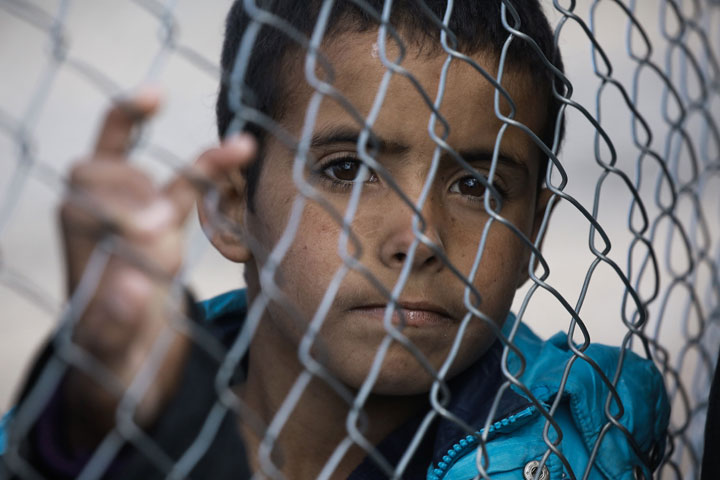An estimated 20,000 people will be directly affected by the United States’ decision to stop admitting refugees, according to the United Nations High Commissioner for Refugees.

These are people who would have been scheduled to be resettled in the United States over the next four months, but whose immediate futures are in doubt after U.S. President Donald Trump signed an executive order on Jan. 27 temporarily suspending all resettlement of refugees in the country for 120 days.
“I’m establishing new vetting measures to keep radical Islamic terrorists out of the United States of America. Don’t want them here,” Trump said on Friday at the Pentagon. In addition to the total refugee ban, these measures also temporarily barred travelers from Syria and six other Muslim-majority countries.
“It means a lot of anxiety and probably frustration on the part of the refugees who were due to travel in those four months,” said Jean-Nicolas Beuze, UNHCR representative in Canada.
“We hear from our colleagues throughout our operation that people are asking questions, are anxious. Some people had already packed their life in a way, decided to sell whatever they could sell, taken their children out of school. So it’s very disruptive for those families.”
READ MORE: Trump refugee ban causes chaos, panic, anger worldwide
People who would have been resettling in the U.S. instead have to remain in refugee camps in Africa or informal settlements in the Middle East, he said. Now UNHCR staff are working to make sure that these people keep their residency permits in whatever country they’re in, and maintain access to food and health care until the travel ban is lifted.
It’s a big job. More refugees resettle in the U.S. than any country in the world: some 85,000 people last year alone, according to figures released in mid-January by the State Department. Seventy-two per cent of these were women and children.
“The United States is proud of its history of welcoming immigrants and refugees,” reads the State Department’s website. “The U.S. refugee resettlement program reflects the United States’ highest values and aspirations to compassion, generosity and leadership. Since 1975, Americans have welcomed over 3 million refugees from all over the world. Refugees have built new lives, homes and communities in towns and cities in all 50 states.”
If the United States doesn’t take in refugees, UNHCR may ask other countries to increase their quotas, said Beuze. But it’s not that simple.
Security screening and resettlement
Resettling in another country is a long process and only about one per cent of the world’s refugees do it, he said. Most refugees remain in their first country of asylum, usually in the same region as the country they have fled.
UNHCR first screens cases to find out who could most benefit from resettlement.
“Here we’re very much looking at people who have very specific needs which cannot be responded to in the first country of asylum. It may be a person with a medical condition, a survivor of torture or rape,” said Beuze. “Or it could be also a widow with a large number of children, five or six children, who would be having difficulties to make ends meet.”
Then, after screening individuals for security concerns – people who were involved in armed hostilities are screened out, for example – UNHCR refers some cases to potential resettlement countries.
Those countries then begin their own screening process, which includes security checks, biometric data, database checks, medical evaluations and in-person interviews by country authorities.
On average, said Beuze, it takes two years for a refugee to be granted admission to the U.S. after UNHCR refers the case. After all of that checking, he said, “They do not pose a security risk at all.”
“We are really looking at the most vulnerable ones. We are looking at survivors of extreme violence, rape victims, widows, elderly people, people with disabilities, sexual minorities. We are looking at people who are in a very vulnerable situation.”
READ MORE: Trump travel ban reaction: ‘Syrian refugees…have been vetted more than Trump’s cabinet picks’
A document on the State Department’s website says, “Refugees are screened more carefully than any other type of traveler to the U.S.” — a statement Beuze agrees with.
“In the U.S. it takes two years to complete the process, which is far more complex than anyone who will go to the U.S. on any other kind of travel arrangement.”
And although UNHCR says it is “alarmed” at the Trump administration’s decision, “We still hope very much that the long tradition of the U.S. of accepting a large number of refugees will resume very shortly,” said Beuze.
Alex Neve, secretary general for Amnesty International Canada, is calling on Canada to open its border to refugee claimants and to rescind the Safe Third Country Agreement, under which a refugee claimant who arrives in Canada via the U.S. must make a refugee claim in the United States.
“Obviously the United States has become a terribly unsafe place for refugees right now,” he said. “At a minimum it is a place of utter chaos and total confusion and Canada needs to rescind the agreement right away and open the door at the Canada-U.S. border to refugee claimants who are fearful, who know that they can’t be safe and protected in the United States can come to Canada.”
With files from Reuters







Comments